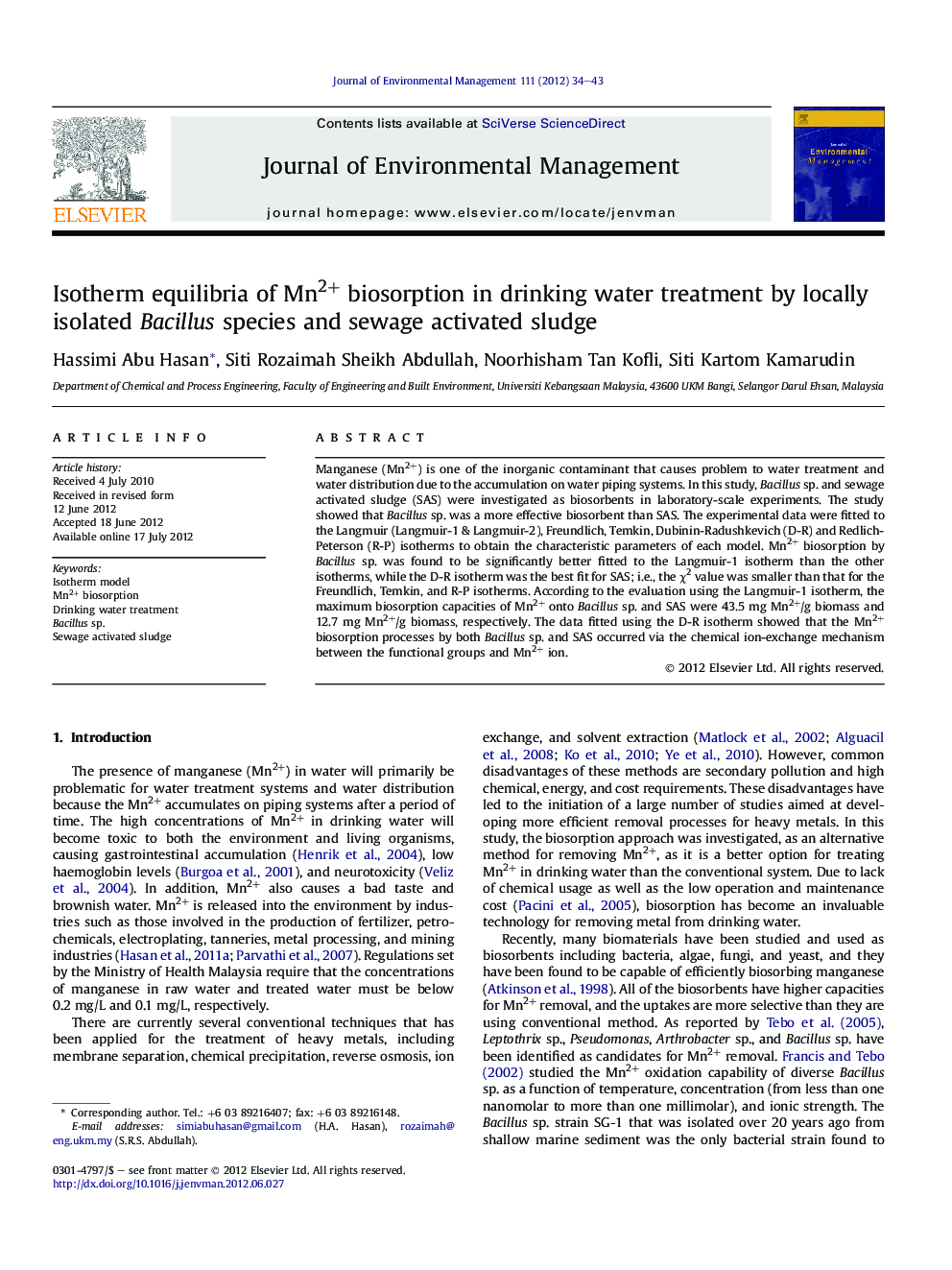| Article ID | Journal | Published Year | Pages | File Type |
|---|---|---|---|---|
| 1056538 | Journal of Environmental Management | 2012 | 10 Pages |
Manganese (Mn2+) is one of the inorganic contaminant that causes problem to water treatment and water distribution due to the accumulation on water piping systems. In this study, Bacillus sp. and sewage activated sludge (SAS) were investigated as biosorbents in laboratory-scale experiments. The study showed that Bacillus sp. was a more effective biosorbent than SAS. The experimental data were fitted to the Langmuir (Langmuir-1 & Langmuir-2), Freundlich, Temkin, Dubinin-Radushkevich (D-R) and Redlich-Peterson (R-P) isotherms to obtain the characteristic parameters of each model. Mn2+ biosorption by Bacillus sp. was found to be significantly better fitted to the Langmuir-1 isotherm than the other isotherms, while the D-R isotherm was the best fit for SAS; i.e., the χ2 value was smaller than that for the Freundlich, Temkin, and R-P isotherms. According to the evaluation using the Langmuir-1 isotherm, the maximum biosorption capacities of Mn2+ onto Bacillus sp. and SAS were 43.5 mg Mn2+/g biomass and 12.7 mg Mn2+/g biomass, respectively. The data fitted using the D-R isotherm showed that the Mn2+ biosorption processes by both Bacillus sp. and SAS occurred via the chemical ion-exchange mechanism between the functional groups and Mn2+ ion.
► The paper focuses on Mn2+ biosorption for drinking water treatment. ► Mn is accumulated along water piping systems when present over a long period of time. ► Bacillus sp. was the most effective biosorbent compared than Sewage Activated Sludge (SAS). ► Mn2+ biosorption by Bacillus sp. was fitted well to the Langmuir-1 isotherm. ► Mn2+ biosorption by SAS was fitted well to the Dubinin-Radushkevich isotherm.
